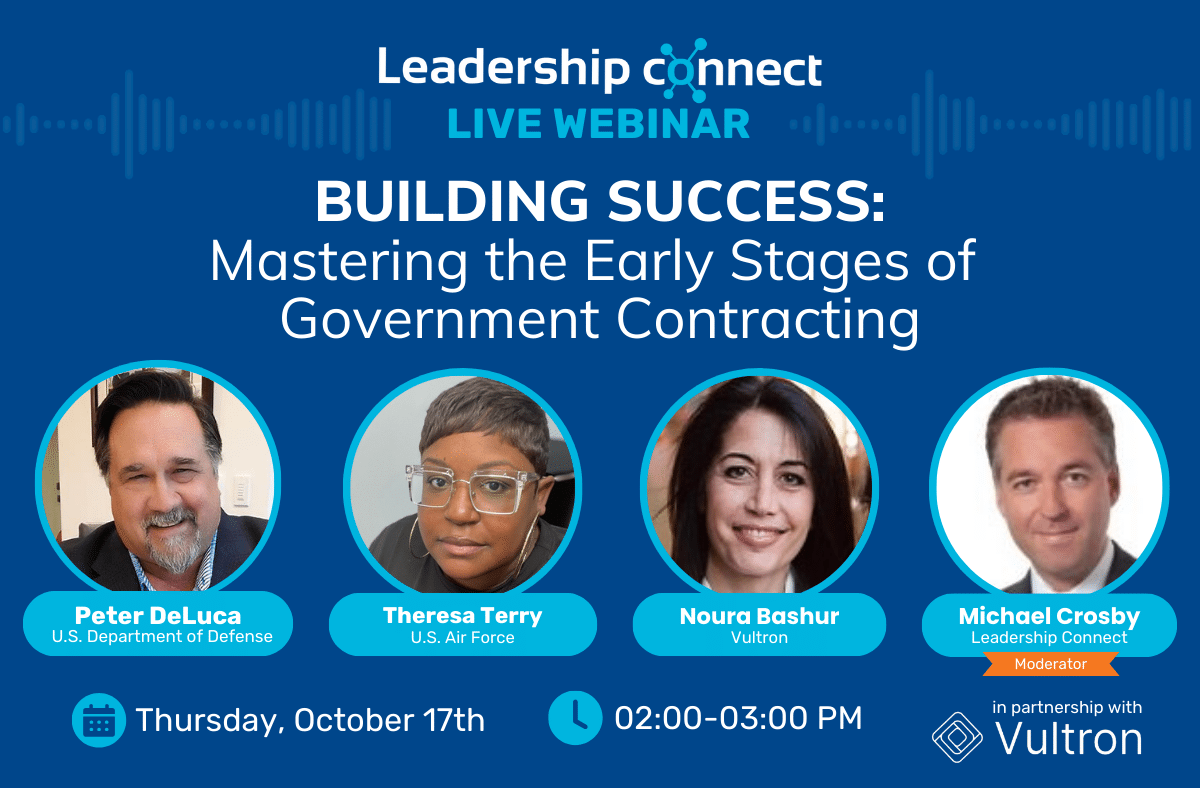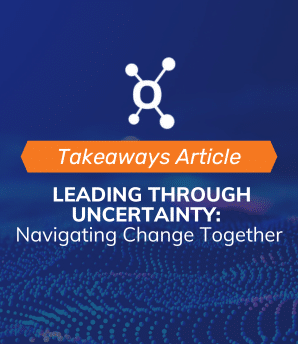On October 17, Leadership Connect and Vultron hosted a webinar focused on educating listeners on earlier and faster growth for federal contractors from both emerging companies and those who have long-time private-sector business seeking to build a foothold in the public sector.
The panelists, led by Leadership Connect’s very own Michael Crosby, covered several topics from dos and don’ts in federal contracting, strategic partnerships, proposal best practices, and more.

Know your starting point
- Subcontracting: Starting with subcontracting gives you a low barrier to entry to start learning, observing, and building key relationships with less pressure. It’s a chance to establish credibility while the stakes are lower to learn why programs and solicitations exist and how to approach purchasing as a prime in the future.
- Success breeds success: Using tactics like subcontracting can start you out on the path to success. Make a name for yourself and build credibility and more success will follow.
- Know the mission: Do your best to understand the agency’s mission so that you can be the answer to their pain points and be a catalyst for mission success. Align your solutions with their objectives to position yourself as a valuable partner in achieving their goals.
- Long-term investment: Understand that entering the federal contracting space requires a strategic mindset. Federal contracts come at a higher price than the commercial market, but if you prove yourself as a key solutions provider, the Federal government will rely on you for the lifecycle of projects which will pay off in the end.
Don’t miss your moment
- Never stop learning: Conduct thorough market research to understand current trends, challenges, and needs within the public sector. Stay informed about changes in policies and funding to anticipate opportunities.
- Be a thought leader: Tailor your solutions to address specific challenges to have an impact on the broader market.
- Put the mission first: When crafting proposals and meeting with senior leaders, focus on their needs and challenges rather than promoting your company. Agencies value your understanding of their goals and pain points more than your capabilities and features.
- Collaboration vs. compliance: Evaluate situations to determine whether collaboration or compliance is the best approach. Once the regulations are set, focus fully on compliance.
- Adaptability: Be flexible in your proposals and solutions, allowing room for modifications based on client feedback and changing circumstances in the market.
Relationships: Building and maintaining
- Relationship-driven: Federal contracting relies on relationships more than the private sector with frequent Joint Ventures. Build and nurture relationships with key stakeholders in the public sector by attending networking events, conferences, and workshops to connect with decision-makers.
- Prevent stagnation: Relationships will get you in the door, but they won’t necessarily keep you there. Incumbent renewals are not guaranteed, so make sure to continuously showcase and articulate your value proposition and adapt your offerings to meet evolving mission needs.
- Partnerships: Seek out partnerships with organizations that complement your strengths by researching active players in the market. Collaborating with others can enhance your capabilities and increase your chances of winning contracts.
Preparing proposals
- Articulate value: Use your proposals to clearly express how your solutions add value. Include quantifiable metrics and testimonials from previous clients to strengthen your case.
- Dedicated teams: Establish specialized proposal teams that focus on researching the market, understanding client needs, and synthesizing business intelligence to enhance proposal quality.
- Follow proper formats: Always adhere to the specific outline and requirements provided in the RFP.
- Seek out the experts: Don’t hesitate to involve compliance experts or legal advisors to ensure your proposals meet all regulatory requirements.






